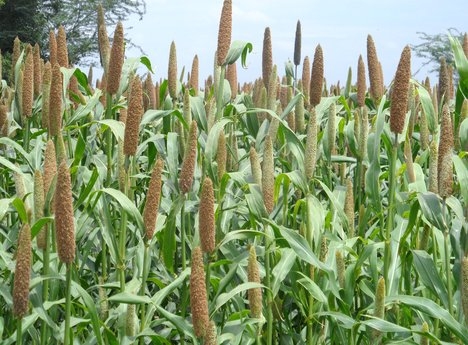General Information
Bajra or pearl millet is widely grown millet in the world. It can tolerate drought, that\'s why it is well adopted in region of scanty rainfall. India is largest producer of Bajra. Along with human consumption, it is used for fodder purpose, its stalk are used to feed animals. Major Pearl millet growing areas in India are Rajasthan, Maharashtra, Gujarat, UP, Haryana, MP, Karnataka, AP and Tamil Nadu.
In Himachal Pradesh it is an early rising crop which is suitable for growing at height less than 1500m. The crop is resistant to SCN poison. The crop gives an average yield of 208-250qtl/acre.









